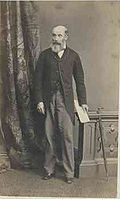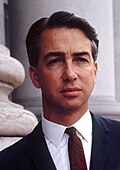| No. | Portrait | Name
Birth–death
Constituency | Election
Parliament | Term of office | Political party | Ministry |
|---|
| Took office | Left office | Time in office |
|---|
| Colonial Government (1856–1901) |
|---|
| 1 |  | Boyle Finniss
(1807–1893)
MHA for Adelaide | 1857 (1st) | 24 October 1856 | 21 August 1857 | 301 days | Independent | Finniss |
|---|
| 2 |  | John Baker
(1813–1872)
Councillor | — (1st) | 21 August 1857 | 1 September 1857 | 11 days | Independent | Baker |
|---|
| 3 |  | Robert Richard Torrens
(1814–1884)
MHA for Adelaide | — (1st) | 1 September 1857 | 30 September 1857 | 29 days | Independent | Torrens |
|---|
| 4 |  | Richard Hanson
(1805–1876)
MHA for Adelaide | — (1st) | 30 September 1857 | 9 May 1860 | 2 years, 222 days | Independent | Hanson |
|---|
| 5 |  | Thomas Reynolds
(1818–1875)
MHA for Adelaide | 1860 (2nd) | 9 May 1860 | 8 October 1861 | 1 year, 152 days | Independent | Reynolds (1st)
Reynolds (2nd) |
|---|
| 6 |  | George Waterhouse
(1824–1906)
Councillor | — (2nd)
1862 (3rd) | 8 October 1861 | 4 July 1863 | 1 year, 269 days | Independent | Waterhouse (1st)
Waterhouse (2nd) |
|---|
| 7 |  | Francis Dutton
(1818–1877)
MHA for Light | — (3rd) | 4 July 1863 | 15 July 1863 | 11 days | Independent | Dutton (1st) |
|---|
| 8 |  | Henry Ayers
(1821–1897)
Councillor | — (3rd) | 15 July 1863 | 4 August 1864 | 1 year, 20 days | Independent | Ayers (1st)
Ayers (2nd) |
|---|
| 9 |  | Arthur Blyth
(1823–1891)
MHA for Gumeracha | — (3rd) | 4 August 1864 | 22 March 1865 | 230 days | Independent | Blyth (1st) |
|---|
| (7) |  | Francis Dutton
(1818–1877)
MHA for Light | 1865 (4th) | 22 March 1865 | 20 September 1865 | 182 days | Independent | Dutton (2nd) |
|---|
| (8) |  | Henry Ayers
(1821–1897)
Councillor | — (4th) | 20 September 1865 | 23 October 1865 | 33 days | Independent | Ayers (3rd) |
|---|
| 10 |  | John Hart
(1809–1873)
MHA for Port Adelaide | — (4th) | 23 October 1865 | 28 March 1866 | 156 days | Independent | Hart (1st) |
|---|
| 11 |  | James Boucaut
(1831–1916)
MHA for Encounter Bay | — (4th) | 28 March 1866 | 3 May 1867 | 1 year, 36 days | Independent | Boucaut (1st) |
|---|
| (8) |  | Henry Ayers
(1821–1897)
Councillor | — (4th)
1868 (5th) | 3 May 1867 | 24 September 1868 | 1 year, 144 days | Independent | Ayers (4th) |
|---|
| (10) |  | John Hart
(1809–1873)
MHA for Light | — (5th) | 24 September 1868 | 13 October 1868 | 19 days | Independent | Hart (2nd) |
|---|
| (8) |  | Henry Ayers
(1821–1897)
Councillor | — (5th) | 13 October 1868 | 3 November 1868 | 21 days | Independent | Ayers (5th) |
|---|
| 12 |  | Henry Strangways
(1832–1920)
MHA for West Torrens | — (5th)
1870 (6th) | 3 November 1868 | 30 May 1870 | 1 year, 208 days | Independent | Strangways (1st)
Strangways (2nd) |
|---|
| (10) |  | John Hart
(1809–1873)
MHA for The Burra | — (6th) | 30 May 1870 | 10 November 1871 | 1 year, 164 days | Independent | Hart (3rd) |
|---|
| (9) |  | Arthur Blyth
(1823–1891)
MHA for Gumeracha | — (6th)
1871 (7th) | 10 November 1871 | 22 January 1872 | 73 days | Independent | Blyth (2nd) |
|---|
| (8) |  | Henry Ayers
(1821–1897)
Councillor | — (7th) | 22 January 1872 | 22 July 1873 | 1 year, 151 days | Independent | Ayers (6th)
Ayers (7th) |
|---|
| (9) |  | Arthur Blyth
(1823–1891)
MHA for Gumeracha | — (7th)
1875 (8th) | 22 July 1873 | 3 June 1875 | 1 year, 316 days | Independent | Blyth (3rd) |
|---|
| (11) |  | James Boucaut
(1831–1916)
MHA for Encounter Bay | — (8th) | 3 June 1875 | 6 June 1876 | 1 year, 3 days | Independent | Boucaut (2nd)
Boucaut (3rd) |
|---|
| 13 |  | John Colton
(1823–1902)
MHA for Noarlunga | — (8th) | 6 June 1876 | 26 October 1877 | 1 year, 142 days | Independent | Colton (1st) |
|---|
| (11) |  | James Boucaut
(1831–1916)
MHA for Encounter Bay | — (8th)
1878 (9th) | 26 October 1877 | 27 September 1878 | 336 days | Independent | Boucaut (4th) |
|---|
| 14 |  | William Morgan
(1828–1883)
Councillor | — (9th)
1881 (10th) | 27 September 1878 | 24 June 1881 | 2 years, 270 days | Independent | Morgan |
|---|
| 15 |  | John Bray
(1842–1894)
MHA for East Adelaide | — (10th)
1884 (11th) | 24 June 1881 | 16 June 1884 | 2 years, 358 days | Independent | Bray |
|---|
| (13) |  | John Colton
(1823–1902)
MHA for Noarlunga | — (11th) | 16 June 1884 | 16 June 1885 | 1 year, 0 days | Independent | Colton (2nd) |
|---|
| 16 |  | John Downer
(1843–1915)
MHA for Barossa | — (11th)
1887 (12th) | 16 June 1885 | 11 June 1887 | 1 year, 360 days | Independent | Downer (1st) |
|---|
| 17 |  | Thomas Playford
(1837–1915)
MHA for Newcastle | — (12th) | 11 June 1887 | 27 June 1889 | 2 years, 16 days | Independent | Playford II (1st) |
|---|
| 18 |  | John Cockburn
(1850–1929)
MHA for Mount Barker | — (12th)
1890 (13th) | 27 June 1889 | 19 August 1890 | 1 year, 53 days | Liberalism | Cockburn |
|---|
| (17) |  | Thomas Playford
(1837–1915)
MHA for East Torrens | — (13th) | 19 August 1890 | 21 June 1892 | 1 year, 307 days | Conservatism | Playford II (2nd) |
|---|
| 19 |  | Frederick Holder
(1850–1909)
MHA for Burra | — (13th) | 21 June 1892 | 15 October 1892 | 116 days | Liberalism | Holder (1st) |
|---|
| (16) |  | John Downer
(1843–1915)
MHA for Barossa | — (13th) | 15 October 1892 | 16 June 1893 | 244 days | Conservatism | Downer (2nd) |
|---|
| 20 |  | Charles Kingston
(1850–1908)
MHA for West Adelaide | 1893 (14th)
1896 (15th)
1899 (16th) | 16 June 1893 | 1 December 1899 | 6 years, 168 days | Liberalism | Kingston |
|---|
| 21 |  | Vaiben Solomon
(1853–1908)
MHA for Northern Territory | — (16th) | 1 December 1899 | 8 December 1899 | 7 days | Conservatism | Solomon |
|---|
| (19) |  | Frederick Holder
(1850–1909)
MHA for Burra | — (16th) | 8 December 1899 | 15 May 1901 | 1 year, 158 days | Liberalism | Holder (2nd) |
|---|
| State Government (1901–present) |
|---|
| 22 |  | John Jenkins
(1851–1923)
MHA for Torrens | — (16th)
1902 (17th) | 15 May 1901 | 1 March 1905 | 3 years, 290 days | Liberalism | Jenkins |
|---|
| 23 |  | Richard Butler
(1850–1925)
MHA for Barossa | — (17th) | 1 March 1905 | 26 July 1905 | 147 days | Conservatism | Butler I |
|---|
| 24 |  | Thomas Price
(1852–1909)
MHA for Torrens | 1905 (18th)
1906 (19th) | 26 July 1905 | 31 May 1909 (†) | 3 years, 309 days | United Labor | Price |
|---|
| 25 |  | Archibald Peake
(1859–1920)
MHA for Victoria & Albert | — (19th) | 5 June 1909 | 3 June 1910 | 363 days | Liberal &
Democratic Union | Peake (1st) |
|---|
| 26 |  | John Verran
(1856–1932)
MHA for Wallaroo | 1910 (20th) | 3 June 1910 | 17 February 1912 | 1 year, 259 days | United Labor | Verran |
|---|
| (25) |  | Archibald Peake
(1859–1920) | 1912 (21st) | 17 February 1912 | 3 April 1915 | 3 years, 45 days | Liberal Union | Peake (2nd) |
|---|
| 27 |  | Crawford Vaughan
(1874–1947)
MHA for Sturt | 1915 (22nd) | 3 April 1915 | 14 July 1917 | 2 years, 102 days | United Labor | Vaughan |
|---|
| (25) |  | Archibald Peake
(1859–1920) | — (22nd)
1918 (23rd) | 14 July 1917 | 6 April 1920 (†) | 2 years, 267 days | Liberal Union | Peake (3rd) |
|---|
| 28 |  | Henry Barwell
(1877–1959)
MHA for Stanley | — (23rd)
1921 (24th) | 8 April 1920 | 16 April 1924 | 4 years, 8 days | Liberal Union
(until 1923)
Liberal Federation
(from 1923) | Barwell |
|---|
| 29 |  | John Gunn
(1884–1959)
MHA for Adelaide | 1924 (25th) | 16 April 1924 | 28 August 1926 | 2 years, 134 days | Labor | Gunn |
|---|
| 30 |  | Lionel Hill
(1881–1963)
MHA for Port Pirie | — (25th) | 28 August 1926 | 8 April 1927 | 223 days | Labor | Hill (1st) |
|---|
| 31 |  | Richard L. Butler
(1885–1966)
MHA for Wooroora | 1927 (26th) | 8 April 1927 | 17 April 1930 | 3 years, 9 days | Liberal Federation | Butler II (1st) |
|---|
| (30) |  | Lionel Hill
(1881–1963) | 1930 (27th) | 17 April 1930 | 13 February 1933 | 2 years, 302 days | Labor | Hill (2nd) |
|---|
| 32 |  | Robert Richards
(1885–1967)
MHA for Wallaroo | — (27th) | 13 February 1933 | 18 April 1933 | 64 days | Labor | Richards |
|---|
| (31) |  | Richard L. Butler
(1885–1966) | 1933 (28th)
1938 (29th) | 18 April 1933 | 5 November 1938 | 5 years, 201 days | Liberal and
Country League | Butler II (2nd) |
|---|
| 33 |  | Thomas Playford
(1896–1981)
MHA for Gumeracha | — (29th)
1941 (30th)
1944 (31st)
1947 (32nd)
1950 (33rd)
1953 (34th)
1956 (35th)
1959 (36th)
1962 (37th) | 5 November 1938 | 10 March 1965 | 26 years, 125 days | Liberal and
Country League | Playford IV (1st)
Playford IV (2nd) |
|---|
| 34 |  | Frank Walsh
(1897–1968)
MHA for Edwardstown | 1965 (38th) | 10 March 1965 | 1 June 1967 | 2 years, 83 days | Labor | Walsh |
|---|
| 35 |  | Don Dunstan
(1926–1999)
MHA for Norwood | — (38th) | 1 June 1967 | 17 April 1968 | 321 days | Labor | Dunstan (1st) |
|---|
| 36 |  | Steele Hall
(1928–2024)
MHA for Gouger | 1968 (39th) | 17 April 1968 | 2 June 1970 | 2 years, 46 days | Liberal and
Country League | Hall |
|---|
| (35) |  | Don Dunstan
(1926–1999)
MHA for Norwood | 1970 (40th)
1973 (41st)
1975 (42nd)
1977 (43rd)
| 2 June 1970 | 15 February 1979 | 8 years, 258 days | Labor | Dunstan (2nd) |
|---|
| 37 |  | Des Corcoran
(1928–2004)
MHA for Hartley | — (43rd) | 15 February 1979 | 18 September 1979 | 215 days | Labor | Corcoran |
|---|
| 38 |  | David Tonkin
(1929–2000)
MHA for Bragg | 1979 (44th) | 18 September 1979 | 10 November 1982 | 3 years, 53 days | Liberal | Tonkin |
|---|
| 39 |  | John Bannon
(1943–2015)
MHA for Ross Smith | 1982 (45th)
1985 (46th)
1989 (47th) | 10 November 1982 | 4 September 1992 | 9 years, 299 days | Labor | Bannon |
|---|
| 40 |  | Lynn Arnold
(born 1949)
MHA for Ramsay | — (47th) | 4 September 1992 | 14 December 1993 | 1 year, 101 days | Labor | Arnold |
|---|
| 41 | | Dean Brown
(born 1943)
MHA for Finniss | 1993 (48th) | 14 December 1993 | 28 November 1996 | 2 years, 350 days | Liberal | Brown |
|---|
| 42 |  | John Olsen
(born 1945)
MHA for Kavel | — (48th)
1997 (49th) | 28 November 1996 | 22 October 2001 | 4 years, 328 days | Liberal | Olsen |
|---|
| 43 | | Rob Kerin
(born 1954)
MHA for Frome | — (49th) | 22 October 2001 | 5 March 2002 | 165 days | Liberal | Kerin |
|---|
| 44 |  | Mike Rann
(born 1953)
MHA for Ramsay | 2002 (50th)
2006 (51st)
2010 (52nd) | 5 March 2002 | 21 October 2011 | 9 years, 230 days | Labor | Rann |
|---|
| 45 |  | Jay Weatherill
(born 1964)
MHA for Cheltenham | — (52nd)
2014 (53rd) | 21 October 2011 | 19 March 2018 | 6 years, 149 days | Labor | Weatherill |
|---|
| 46 |  | Steven Marshall
(born 1968)
MHA for Dunstan | 2018 (54th) | 19 March 2018 | 21 March 2022 | 4 years, 2 days | Liberal | Marshall |
|---|
| 47 |  | Peter Malinauskas
(born 1980)
MHA for Croydon | 2022 (55th) | 21 March 2022 | — | 3 years, 209 days | Labor | Malinauskas |
|---|
















































